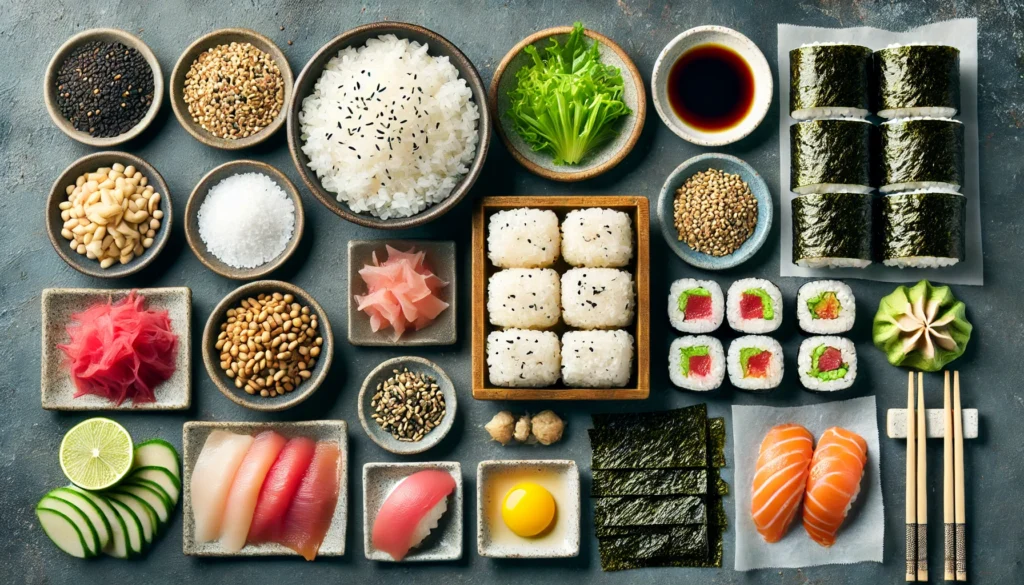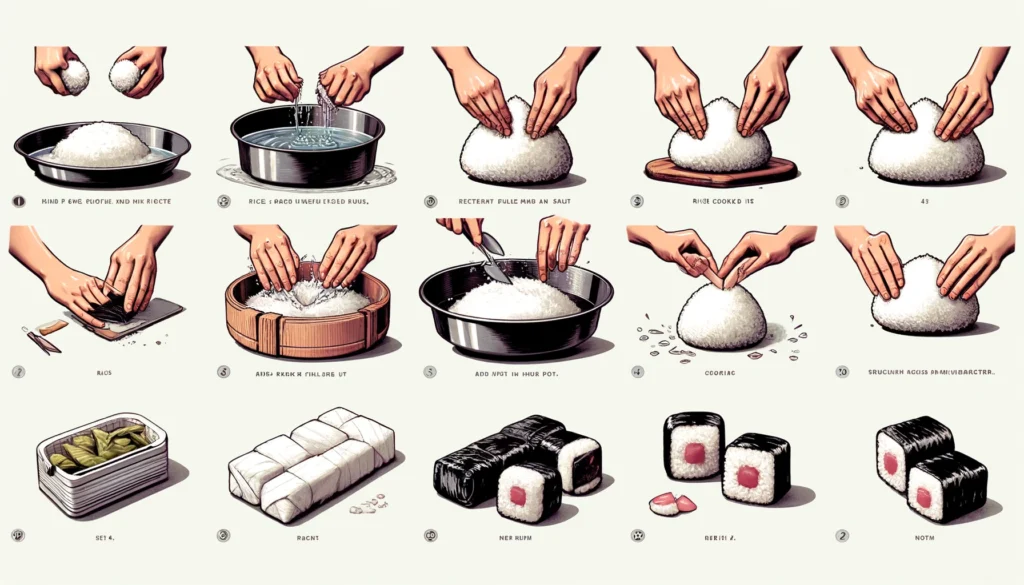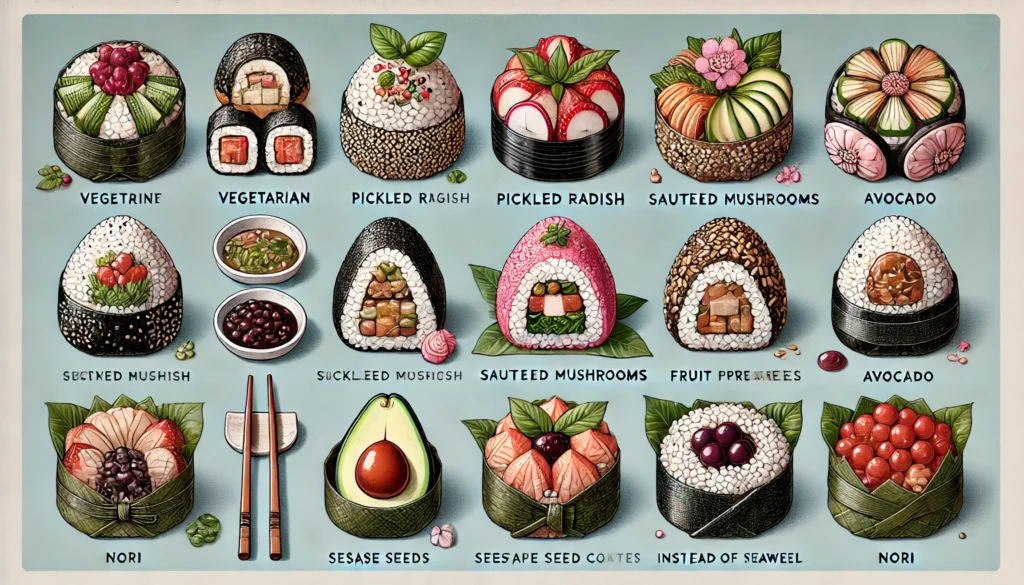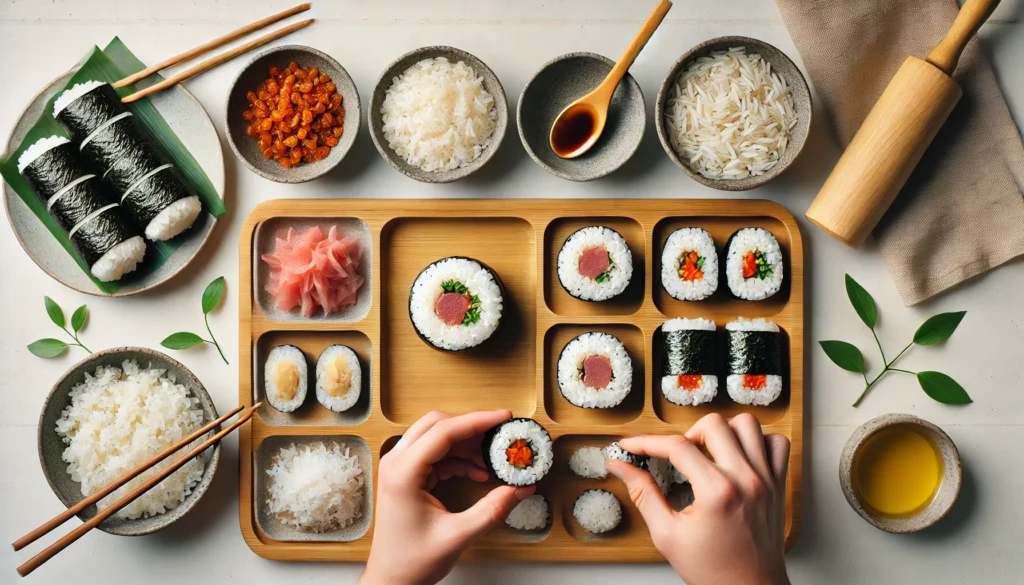Onigiri, also known as Japanese rice balls, are a popular and versatile snack or meal option in Japan. These simple yet flavorful treats can be enjoyed on their own or as part of a bento lunch. Whether you’re a sushi enthusiast or a beginner in Japanese cuisine, making onigiri at home is both easy and rewarding. This guide will walk you through everything you need to know to create perfect onigiri.
What is Onigiri?
Onigiri are traditional Japanese rice balls typically made with short-grain rice and seasoned with a variety of ingredients. They are often shaped into triangles or ovals and wrapped in nori (seaweed). Onigiri can be filled with various ingredients, from pickled plums to tuna and mayo, making them highly customizable.
Ingredients for Onigiri

- Rice
- Type: Short-grain or sushi rice is ideal because of its sticky texture. Avoid long-grain rice as it won’t hold together well.
- Quantity: About 2 cups of uncooked rice will make approximately 6-8 onigiri.
- Seasoning for Rice
- Salt: To taste. It enhances the flavor of the rice and helps with preservation.
- Rice Vinegar: Optional. Adds a slight tanginess and can be mixed with salt for a seasoned rice flavor.
- Fillings
- Traditional Fillings: Umeboshi (pickled plums), salted salmon, or bonito flakes.
- Modern Fillings: Tuna mixed with mayonnaise, cooked chicken, or vegetables.
- Nori (Seaweed)
- Type: Roasted seaweed sheets cut into strips or squares for wrapping the onigiri.
Basic Onigiri Recipe
Ingredients:
- 2 cups short-grain or sushi rice
- 2 ½ cups water
- Salt to taste
- Your choice of filling (e.g., umeboshi, tuna mayo, cooked chicken)
- Nori sheets, cut into strips or squares (optional)
Instructions:

- Cook the Rice
- Rinse: Wash the rice under cold water until the water runs clear to remove excess starch.
- Cook: Add the rinsed rice and water to a rice cooker or a pot. Cook according to the rice cooker’s instructions or bring to a boil, then cover and simmer on low heat for 15-20 minutes. Let the rice sit covered for 10 minutes after cooking to steam and firm up.
- Prepare the Rice
- Season: Once the rice is cooked and still warm, season with a little salt to taste. If desired, mix in a small amount of rice vinegar for extra flavor.
- Shape the Onigiri
- Preparation: Wet your hands with water to prevent the rice from sticking. Take a small amount of rice (about ¼ cup) and form it into a triangle or oval shape.
- Add Filling: Make a small indentation in the center of the rice and place a small amount of filling inside. Carefully mold the rice around the filling to enclose it completely.
- Wrap with Nori: Optionally, wrap each onigiri with a strip or square of nori.
- Serve and Store
- Serve: Enjoy your onigiri immediately or pack them for lunch.
- Store: If storing, keep onigiri in an airtight container at room temperature for up to 1 day, or in the refrigerator for up to 3 days. For longer storage, freeze them and reheat before serving.
Variations and Tips

- Vegetarian Onigiri
- Fill with seasoned vegetables like pickled radish, sautéed mushrooms, or avocado.
- Sweet Onigiri
- For a sweet twist, try filling with sweetened red bean paste or fruit preserves.
- Adding Texture
- Mix sesame seeds or furikake (Japanese rice seasoning) into the rice for added flavor and texture.
- Perfect Shaping
- Use a rice mold for perfectly shaped onigiri, or practice shaping by hand for a rustic look.
- Nori Alternatives
- If you prefer, onigiri can be enjoyed without nori or with a light coating of sesame seeds.
Common Mistakes to Avoid
- Rice Too Dry or Too Wet: Ensure the rice is properly cooked and seasoned. Overcooked or undercooked rice will affect the texture of the onigiri.
- Not Enough Filling: Be generous with the filling, but don’t overfill. Too little filling can make the onigiri dry, while too much can make it difficult to shape.
- Handling the Rice: Wet your hands before handling the rice to prevent sticking and ensure a smooth texture.
Onigiri are a delightful and practical addition to any meal, offering endless possibilities for customization. By following these tips and techniques, you can create delicious and authentic Japanese rice balls right in your own kitchen. For more recipes, cooking tips, and Japanese cuisine inspiration, visit HomeGardenLove!

